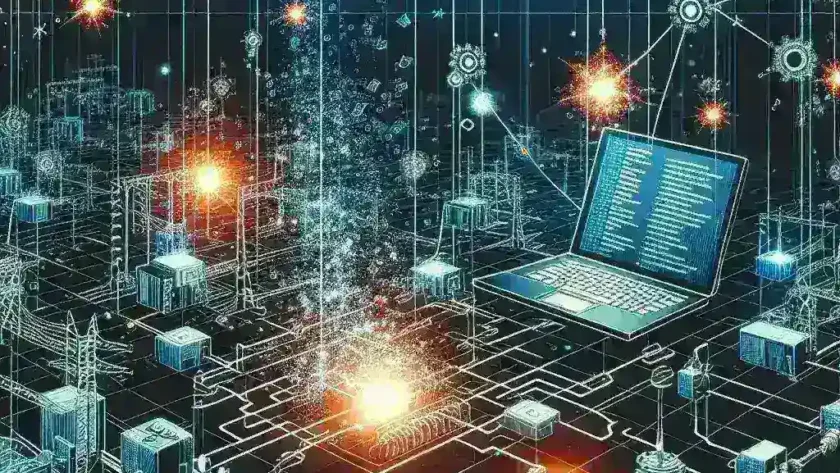Introduction
The energy market is undergoing a significant transformation, driven by advancements in technology and the increasing integration of renewable energy sources. However, this shift is also accompanied by new vulnerabilities, particularly concerning smart grid systems. In this article, we will explore how smart grid hacks can disrupt the energy market, the implications of such disruptions, and ways to safeguard against them.
Understanding Smart Grids
Smart grids are modernized electrical grids that use digital communication technology to detect and react to local changes in usage. They enhance the reliability, efficiency, and sustainability of energy distribution. However, their interconnected nature also makes them susceptible to cyber threats. According to the U.S. Department of Energy, smart grids can improve efficiency by 30%, but they also open new avenues for hackers.
The Rise of Cybersecurity Threats
The increasing reliance on smart grids has led to a rise in cybersecurity threats. Hackers are becoming more sophisticated, and the potential for disruption is significant. In 2020 alone, the energy sector faced a reported 55% increase in cyberattacks. These threats are not just theoretical; there have been real instances where smart grids have been compromised.
Historical Context
One of the most notable incidents occurred in 2015 when a cyberattack on Ukraine’s power grid left approximately 230,000 residents without electricity for several hours. This attack showcased the vulnerabilities of smart grids and highlighted the potential for a more extensive disruption. The incident prompted energy companies worldwide to reassess their cybersecurity measures.
Implications of Smart Grid Hacks
Smart grid hacks can have severe consequences on various levels. Here are some of the implications:
- Economic Impact: Disruptions can lead to significant financial losses for energy companies and consumers alike. The cost of downtime, restoration, and damage control can skyrocket.
- Safety Risks: Power outages can lead to dangerous situations, especially in hospitals, where uninterrupted power is crucial. Moreover, damage to equipment can pose physical risks to workers and consumers.
- Data Breaches: Smart grids collect vast amounts of data, including consumer usage patterns. A hack can lead to theft of personal information, leading to further financial repercussions.
Future Predictions
As technology advances, the interconnectedness of smart grids will likely increase. Future predictions indicate that more devices will be added to the grid, creating a larger attack surface for potential hackers. Experts warn that unless significant investments are made in cybersecurity, the energy sector may face increasingly sophisticated attacks. According to a report by Cybersecurity Ventures, global spending on cybersecurity will exceed $1 trillion from 2017 to 2021, highlighting the urgency of this issue.
Pros and Cons of Smart Grids
While smart grids offer numerous benefits, they also come with potential drawbacks.
- Pros:
- Improved energy efficiency
- Enhanced reliability and service quality
- Integration of renewable energy sources
- Real-time monitoring and quick response to outages
- Cons:
- Increased vulnerability to cyberattacks
- High initial costs for implementation and maintenance
- Privacy concerns related to data collection
How to Protect Against Smart Grid Hacks
Although the risks associated with smart grid hacks are real, there are steps that energy companies and consumers can take to mitigate these threats.
1. Implementing Strong Cybersecurity Measures
Energy companies should invest in robust cybersecurity infrastructures, including firewalls, encryption, and intrusion detection systems. Regular security audits and updates are essential to stay ahead of potential threats.
2. Employee Training and Awareness
Human error is often a significant factor in cybersecurity breaches. Training employees to recognize phishing attempts and other cyber threats can significantly reduce risks.
3. Collaboration with Government Agencies
Collaboration between energy companies and government agencies can enhance cybersecurity. Sharing information about threats and vulnerabilities can lead to a more cohesive defense strategy.
4. Consumer Education
Educating consumers about smart grid technology and potential risks can empower them to take proactive measures to protect their personal data.
Conclusion
The disruption of the energy market through smart grid hacks is a pressing issue that requires immediate attention. As technology continues to evolve and the demand for energy increases, so do the vulnerabilities associated with smart grids. By understanding the implications and taking proactive measures, energy companies can safeguard against potential threats while harnessing the benefits of modern energy distribution systems.
Final Thoughts
As we look to the future, it is crucial to strike a balance between innovation and security in the energy sector. By prioritizing cybersecurity measures and fostering collaboration, we can create a resilient energy market that withstands the challenges posed by smart grid hacks.

